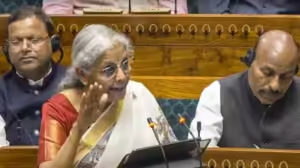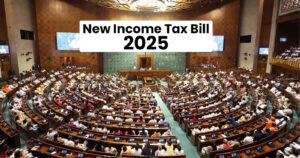India Hits a Milestone: ISRO Launches Its Heaviest Communication Satellite Yet, CMS-03
Income Tax 2025: This year highlights, changes, important information and other details on Income Tax 2025.

Income Tax 2025
Income Tax 2025: India is set to introduce a new Income Tax Bill in Parliament on February 13, 2025, aiming to replace the six-decade-old Income Tax Act of 1961. The proposed legislation, spanning 622 pages, seeks to simplify the tax code by eliminating obsolete sections and presenting tax rates in a more accessible format.

These reforms are part of the government’s ongoing efforts to modernize the tax system, reduce litigation, and make compliance more straightforward for taxpayers. The bill is expected to be effective from April 2026, pending parliamentary approval.
What are the changes in Income Tax 2025?
Some changes in income tax 2025 bill are as following: –
- The bill replaces the term ‘previous year’ with ‘tax year’ to align with international standards, aiming to reduce confusion among taxpayers.
- Elimination of Obsolete Provisions by removing outdated sections, the bill reduces the law’s length from over 800 pages to 622 pages, making it more concise and user-friendly.
- Enhanced Clarity and Compliance by streamlined provisions aim to clarify the law, reduce legal disputes, and foster voluntary compliance among taxpayers.

What are the changes in Income Tax 2025?
Important details for individual and businesses.
Some important details for individual and businesses are as following: –
- Simplification of Tax Laws by the bill reduces the length of the existing law from over 800 pages to 622 pages by eliminating obsolete provisions and presenting tax rates in a more accessible format.
- Introduction of ‘Tax Year’ Concept by the term ‘previous year’ is replaced with ‘tax year’ to align with international standards, aiming to reduce confusion among taxpayers.
- Revised Income Tax Slabs by the highest tax rate of 30% will now apply to incomes above ₹24 lakh, up from the previous threshold of ₹15 lakh.

Important details for individual and businesses. - Enhanced Clarity and Compliance by Streamlined provisions aim to clarify the law, reduce legal disputes, and foster voluntary compliance among taxpayers.
- Digital Monitoring and Compliance by the bill introduces provisions for enhanced digital monitoring to streamline compliance and reduce manual interventions.
- Consolidation of Tax Provisions by the new code consolidates various tax provisions to eliminate redundancies and improve clarity.
Common tax myths and misconceptions.
Some common myths and misconceptions are as following: –
- Revised Tax Slabs Automatically Mean Higher Taxes for Everyone.
- The Introduction of the ‘Tax Year’ Concept Changes How Tax is Calculated.
- Simplifying the Tax Code Means Removing Popular Deductions and Exemptions.

Common tax myths and misconceptions. - Enhanced Digital Monitoring Will Lead to Invasive Surveillance of Taxpayers.
- The Reduction in the Length of the Act Means Essential Rules Are Being Removed.
- The Bill Only Focuses on Simplification and Has No Impact on Tax Liability.
Also Read This: Dark web: what is Dark web, how does it work, what ways we can access it and its future.



